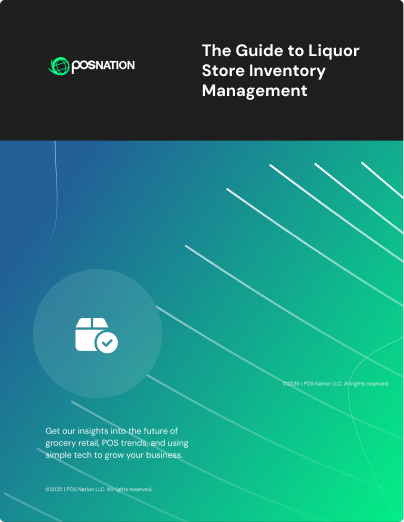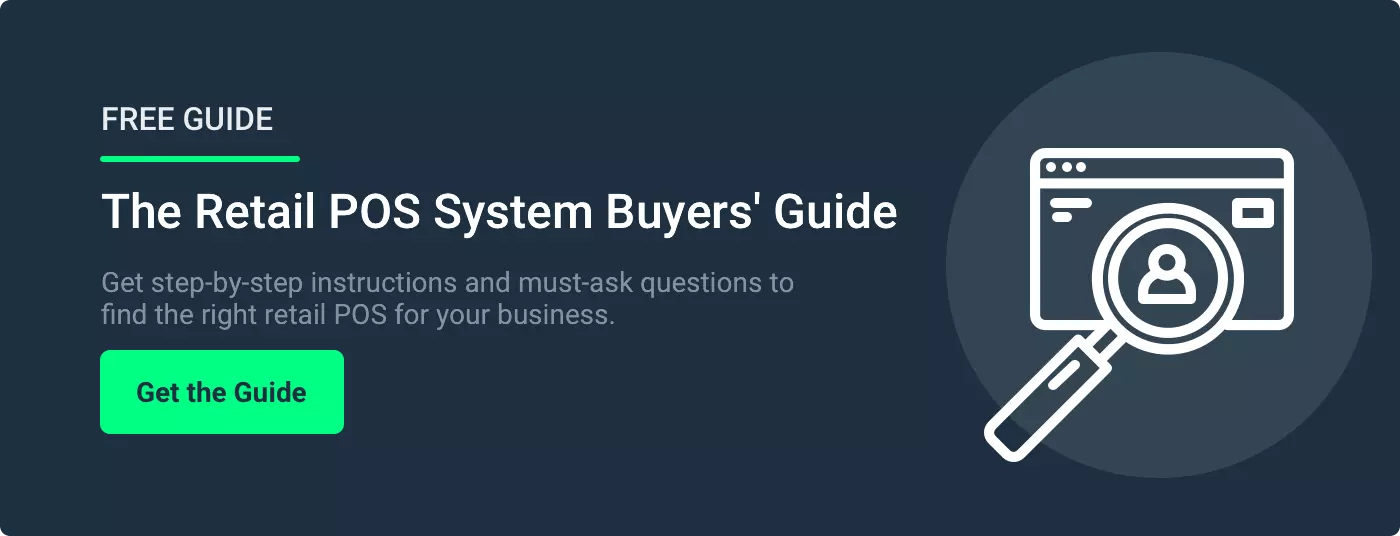Inventory management problems are usually felt in the stockroom, but they often start much earlier with a system that can’t keep up. Delayed orders, missed counts — suddenly, your staff are dealing with shortages you didn’t know existed.
So, if you care about profit margins, fast fulfillment, and happy customers, it’s time to use proven inventory management best practices. In retail, an industry-specific point of sale (POS) system gives live stock updates, flags problems before they snowball, and delivers the data you need to make better decisions.
Here are 10 inventory best practices every retailer should follow, and how the right POS can help you implement them.
1. Keep Real-Time Stock Counts
Manual logs and outdated spreadsheets can’t keep up with the pace of modern retail. One missed update, and you’re either out of your top sellers or stuck with shelves full of slow movers.
One of the top inventory management best practices is implementing POS software with real-time inventory tracking to give you a clear picture of what’s in stock, what’s selling fast, and what needs to be reordered. You can also catch issues early, like miscounts or shrinkage, before they worsen.
2. Set Minimum Stock Levels
Stockouts hurt your sales, frustrate customers, stress out your team, and chip away at your store’s reputation.
With a POS system that lets you set minimum stock levels, you’ll get alerts before inventory runs dry. Some systems even allow you to set custom reorder points and generate purchase orders for key products. This helps prevent last-minute stockouts and keeps customers from leaving empty-handed.
3. Be Consistent When Receiving Stock
Inconsistent receiving practices create gaps between what’s on the shelf and your system. Without a straightforward step-by-step process, staff might forget to scan items, overlook notes, or miscount boxes. This wastes time and leads to misplaced or uncounted items.
With POS systems built for your industry, you can standardize receiving using tools like invoice importing, barcode scanning, and real-time stock updates. Products are scanned, matched to purchase orders, and added to inventory without extra steps.
4. Audit Inventory Regularly
Waiting until year-end to complete a physical inventory count is risky, especially in a high-volume retail environment. Instead, many retailers use cycle counting, where small inventory sections are checked regularly throughout the year.
Retail POS technology helps you establish inventory management best practices by prioritizing what to audit by highlighting fast-moving items, frequently returned products, or commonly miscounted stock. With inventory management software, you can catch problems early and keep your in-store inventory accurate without shutting down for a full count.
5. Analyze Supplier Performance
Missed deliveries and late shipments often begin with supplier issues, not stockroom mistakes.
If your POS software tracks supplier activity, it’s easier to spot recurring problems early.
Log deliveries, monitor back orders, and compare vendors over time to spot patterns. This will help you flag unreliable suppliers and line up backup options before your shelves and sales suffer.
6. Practice the 80/20 Inventory Rule
In retail, the 80/20 rule means a small percentage of products usually drive most of your profits. The numbers may vary, but the takeaway is simple: Focusing on your bestsellers helps you manage inventory better and maximize shelf space.
Your POS system can highlight top-performing products with detailed sales reports. Filter by revenue, profit margin, or units sold to zero in on what’s moving, and make better decisions about what to restock or promote.
7. Use Demand Forecasting
Stocking blindly for the season ahead can leave you overstocked with last year’s trending items and short on what customers are buying now. Without forecasting, seasonal swings and sudden trends can result in unsold products or empty shelves.
Instead of guessing, use your POS system’s sales data to identify trends in customer behavior, product demand, and seasonal performance. Combine these insights with vendor input, market research, and planned promotions to implement a future-proof merchandise plan.
8. Categorize and Tag Products Properly
When your product catalog is disorganized with duplicate entries, vague item names, or missing details, it slows down your workflow. Staff waste time searching for items that might not be there, reports are unreliable, and reordering is a trial-and-error process.
POS software programs allow you to organize inventory using custom categories, product tags, and variants like size, color, or model. The result? Faster checkouts, smarter reporting, and cleaner data across your entire system.
9. Practice FIFO
Letting older inventory sit too long can lead to spoilage, markdowns, or dead stock, especially with perishables or trend-driven items.
First in, first out (FIFO) is a simple method that prioritizes selling your oldest stock first. With a POS system, you can track inventory aging or use batch tracking to see what’s been sitting the longest. This means easier stock rotation, smarter promotions, and fewer write-offs down the line.
10. Train Staff on Inventory Procedures
Even the best POS system won’t help if your team doesn’t know how to use it. Miscounts, skipped steps, and inconsistent receiving usually point back to poor training, not bad tech.
That’s why it's important to choose a POS software that fits your workflow and makes training easier. Look for features like guided inventory counts, barcode scanning, and user permissions to control who can update stock or process returns. These tools reduce errors, speed up onboarding, and help keep your inventory accurate.
Take Charge of Your Stock With Inventory Management Best Practices
Inventory shouldn’t be treated as just a backroom chore — it’s a strategic part of running a successful retail business. From cash flow to customer satisfaction, your inventory impacts nearly every part of your daily operations.
Luckily, implementing inventory management best practices can help prevent stock issues, reduce waste, and help you make smarter, data-driven decisions across your store.
POS Nation helps retailers find the right software solution for their business, whether they run a convenience store, garden center, or general retail shop. Its featured system, Comcash POS, offers real-time inventory tracking, automatic reorder alerts, and reporting tools to keep you in control from the sales floor to the stockroom.
Book a free demo to see how it can save you hours on inventory tasks, prevent costly stockouts, and give you the tools to make faster decisions.




